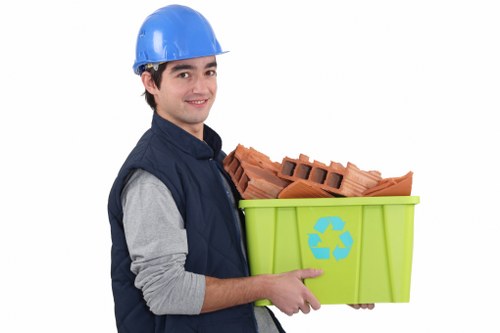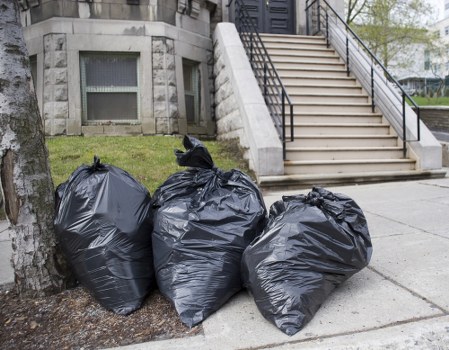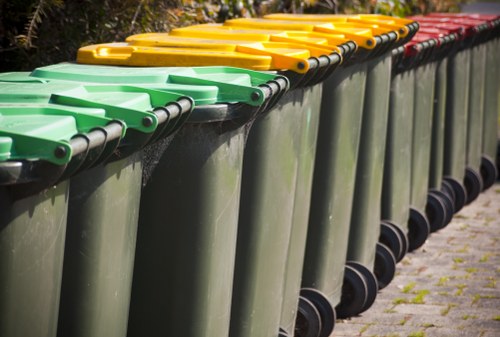Effective Flat Clearance in Temples: A Comprehensive Guide

Understanding Flat Clearance
Flat clearance in temples refers to the organized removal and management of items that are no longer needed or have served their purpose within the temple premises. This process is essential for maintaining the sanctity and cleanliness of the temple environment.
Proper flat clearance not only ensures a clutter-free space but also respects the religious and cultural significance of the temple. It involves carefully planning and executing the removal of objects such as outdated decorations, damaged items, and unused equipment.
Implementing an effective flat clearance strategy helps in preserving the temple's aesthetic appeal and functionality, allowing devotees to have an enhanced spiritual experience.

The Importance of Flat Clearance in Temples
Maintaining Sanctity: A clean and organized temple environment is crucial for maintaining its sacredness. Clutter and disorganization can distract devotees and hamper their spiritual practices.
Enhancing Aesthetics: Regular flat clearance ensures that the temple remains visually appealing. Removing old and worn-out items makes space for new decorations and installations that reflect the temple's evolving spiritual journey.
Safety and Hygiene: Proper clearance eliminates potential hazards caused by broken or unstable items. It also promotes hygiene by reducing dust accumulation and preventing the spread of contaminants.

Steps to Achieve Effective Flat Clearance
Assessment and Planning
Begin by assessing the current state of the temple. Identify items that are no longer needed, damaged, or outdated. Create a detailed plan outlining the items to be cleared, the resources required, and the timeline for the clearance process.
Categorization of Items
Sort the items into categories such as reusable, recyclable, and waste. Reusable items can be donated or repurposed, while recyclable items should be processed accordingly. Waste items need to be disposed of following environmental guidelines.
Involving the Community
Engage the temple community, including volunteers and devotees, in the clearance process. Their involvement can provide additional manpower and foster a sense of collective responsibility towards maintaining the temple premises.

Best Practices for Flat Clearance
Scheduled Clearance
Establish a regular schedule for flat clearance to prevent buildup of unnecessary items. Monthly or quarterly clearances can help maintain order and prevent overwhelming tasks.
Proper Disposal Methods
Ensure that disposal methods comply with local regulations. For instance, electronic items should be recycled appropriately, and hazardous materials must be handled with care to avoid environmental contamination.
Documentation and Record-Keeping
Maintain records of items cleared, including descriptions and disposal methods. This practice aids in accountability and provides a reference for future clearance activities.
Utilizing Professional Services
If the volume of items is substantial, consider hiring professional clearance services. These experts can manage the process efficiently, ensuring compliance with all regulations and minimizing disruption to temple activities.

Challenges and Solutions in Flat Clearance
Emotional Attachment
Devotees may have sentimental attachments to certain items, making clearance difficult. Address this by respecting their feelings and finding alternative ways to honor the items, such as relocation to a memorial area within the temple.
Space Limitations
Temples often have limited space for storage and disposal. Optimize available space by implementing vertical storage solutions and regularly purging unnecessary items.
Resource Constraints
Limited financial and human resources can hinder the clearance process. Mitigate this by organizing volunteer drives and seeking donations or grants to support the necessary activities.
Technological Integration
Leverage technology to streamline the clearance process. Use inventory management software to track items and schedule clearance activities efficiently.
Community Engagement
Foster a sense of ownership among the community by involving them in decision-making and recognizing their contributions. This approach can enhance cooperation and make the clearance process smoother.

Environmental Considerations
Flat clearance should prioritize environmentally friendly practices. Minimizing waste and promoting recycling helps in reducing the temple's ecological footprint.
Sustainable Disposal
Adopt sustainable disposal methods such as composting organic waste and recycling materials like paper, plastic, and metal. Partner with local recycling facilities to ensure proper processing of recyclable items.
Reducing Waste
Implement strategies to reduce waste generation. Encourage the use of reusable items and limit the purchase of disposable products for temple activities.
Energy Efficiency
Optimize energy use during the clearance process by using energy-efficient equipment and minimizing the use of non-renewable resources.
Green Initiatives
Introduce green initiatives such as planting trees or creating a garden within the temple grounds as part of the clearance efforts. These activities can contribute to environmental sustainability and enhance the temple's surroundings.

Legal and Ethical Aspects
Compliance with Regulations
Ensure that the flat clearance process complies with local laws and regulations. This includes obtaining necessary permits for disposal and adhering to waste management protocols.
Ethical Disposal
Disposal of items should be carried out ethically, respecting the temple's values and beliefs. Avoid practices that could be considered disrespectful or harmful to the community.
Transparency
Maintain transparency throughout the clearance process by keeping the community informed about the steps being taken and the outcomes achieved. This builds trust and ensures accountability.
Protecting Sacred Spaces
When clearing flats, take care to preserve and protect areas of the temple that hold special religious significance. Avoid disturbing sacred spaces during the clearance activities.

Case Studies: Successful Flat Clearance in Temples
Case Study 1: XYZ Temple
XYZ Temple implemented a monthly flat clearance system, involving volunteers from the community. They successfully reduced clutter and enhanced the temple's appearance, leading to increased visitor satisfaction.
Case Study 2: ABC Sanctuary
ABC Sanctuary partnered with a local recycling company to manage their clearance process. This collaboration ensured that recyclable items were properly processed, promoting environmental sustainability.
Lessons Learned
These case studies highlight the importance of planning, community involvement, and partnerships in achieving effective flat clearance. Adopting similar strategies can lead to successful outcomes in other temples.
Case Study 3: DEF Ashram
DEF Ashram faced challenges with limited resources but overcame them by organizing frequent volunteer drives and seeking donations. Their efforts resulted in a well-maintained and orderly temple environment.

Technological Tools for Flat Clearance
Inventory Management Systems
Using inventory management software helps in tracking items within the temple premises. It facilitates efficient planning and execution of the clearance process by providing real-time information.
Scheduling Tools
Scheduling tools assist in organizing clearance activities, ensuring that tasks are completed on time and resources are utilized effectively.
Mobile Applications
Mobile apps can be used to coordinate volunteers, communicate tasks, and monitor progress during the clearance process. They enhance collaboration and streamline operations.
Digital Documentation
Maintaining digital records of cleared items simplifies record-keeping and makes it easier to reference past clearance activities. This practice supports transparency and accountability.

Community Benefits of Flat Clearance
Enhanced Spiritual Experience
A clean and organized temple environment fosters a conducive atmosphere for spiritual activities. Devotees can engage more deeply in their practices without distractions.
Increased Participation
When the temple is well-maintained, it attracts more visitors and encourages greater participation in religious events and ceremonies.
Strengthened Community Bonds
Collaborative clearance efforts bring the community together, strengthening bonds and promoting a sense of unity and shared purpose.
Economic Advantages
Maintenance through flat clearance can extend the lifespan of temple assets, reducing the need for frequent replacements and saving costs in the long run.
Environmental Stewardship
Adopting eco-friendly clearance practices reinforces the temple's commitment to environmental stewardship, inspiring the community to adopt similar behaviors in their personal lives.

Future Trends in Flat Clearance
As temples continue to evolve, flat clearance practices are also adapting to incorporate new technologies and sustainable methods. Future trends include the use of artificial intelligence for inventory management and increased emphasis on green disposal practices.
Automation and AI
Automation tools and artificial intelligence can streamline the clearance process, making it more efficient and reducing the reliance on manual labor.
Sustainable Innovations
Emerging sustainable practices, such as zero-waste clearance and the use of renewable materials, are set to become integral parts of temple maintenance strategies.
Community-Driven Initiatives
Future flat clearance efforts will likely involve more community-driven initiatives, fostering greater involvement and ownership among temple members.
Integration with Smart Technologies
Integrating smart technologies like IoT devices can enhance monitoring and management of temple assets, facilitating proactive maintenance and clearance.
Global Best Practices
Temples worldwide are sharing best practices for flat clearance, leading to the adoption of standardized methods that improve efficiency and outcomes.

Conclusion
Flat clearance in temples is a vital process that ensures the maintenance of a sacred and welcoming environment for devotees. By implementing structured clearance strategies, involving the community, and embracing sustainable practices, temples can achieve a clutter-free and serene atmosphere.
Take Action Today: Ensure your temple remains a beacon of spirituality and harmony. Contact us today to learn more about effective flat clearance solutions tailored to your temple's unique needs.